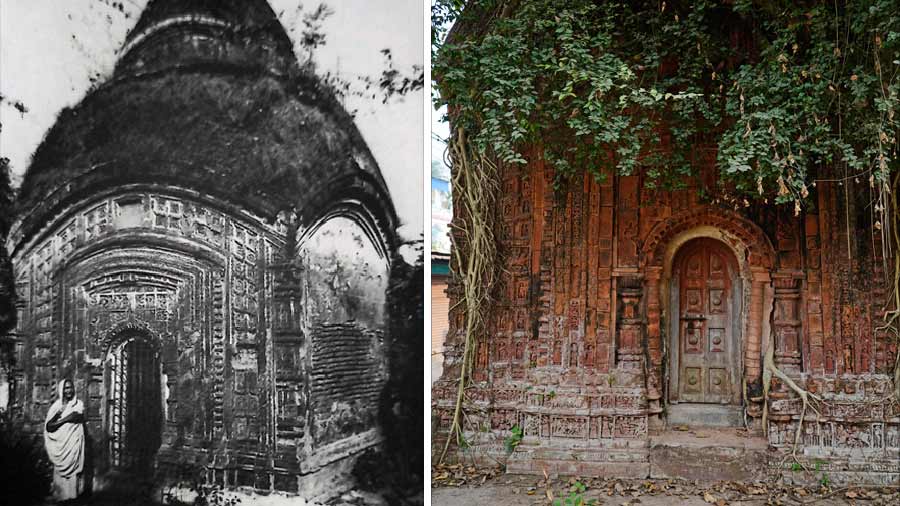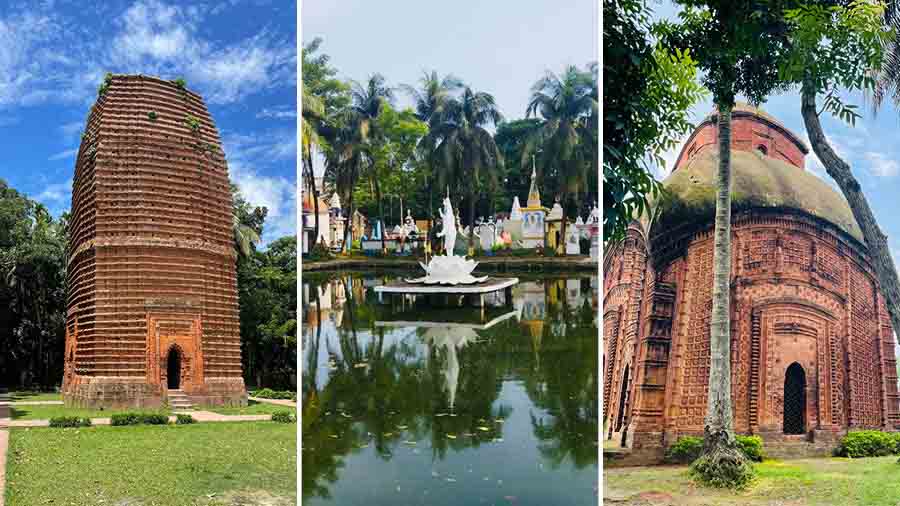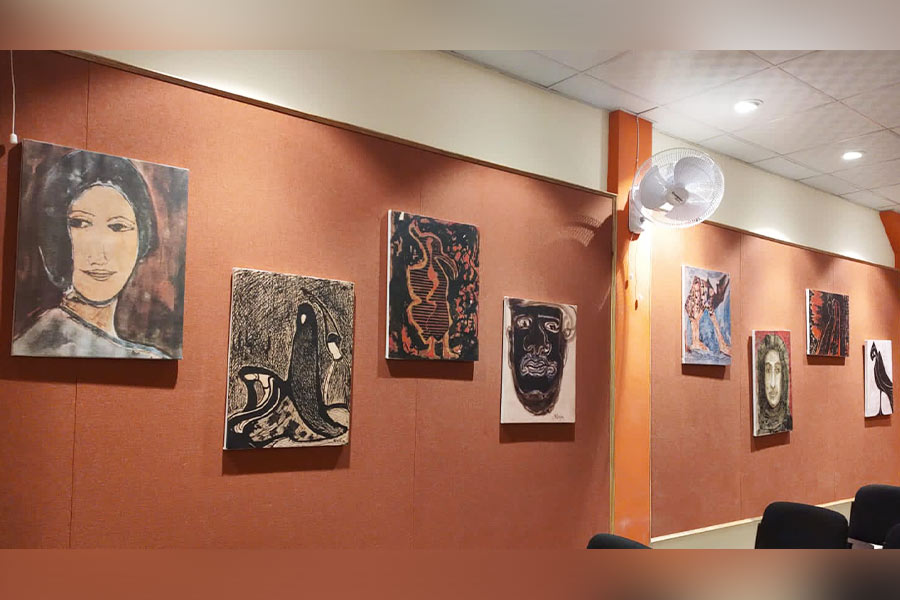While walking through the lanes of Halisahar, one can never imagine that the history of this suburban town of West Bengal dates back to the mediaeval ages. Binoy Ghosh mentions in his book Paschimbanger Sanskriti (Vol 3) that he had observed two stone deities excavated here, which in all probabilities date from the Pala Sena era, along with a Ganesha statue at Subha Chanditala area. The name 'Halisahar' is probably derived from the term 'Haveli Sahar'. In Ain-e-Akbari, the name of Havelisahar is found as one of the parganas under Satgaon Sarkar. Halisahar is also mentioned in 16th-century Bengali poet Mukundaram Chakrabarty’s magnum opus – Chandimangal Mangalkavyas (Bengali religious texts). The name 'Kumarhatta' is also associated with Halisahar, which is believed by some scholars to be another name of the place given at a much later stage.
The credit of creating a settlement at Halisahar is often given to Panchanan Gangopadhyay, who is from the lineage of Sabarna Roychowdhury family. He is believed to be a commander in Humyun’s army, where he showed his bravery resulting in the emperor awarding him with a title, “Shakti Khan”. Thus, Panchanan became Panchu Shakti Khan. After retirement, he founded a “samaj” or settlement around 1450 at Haveli Sahar on the eastern banks of Bhagirathi. The place once had Mughal Havildar’s encampment and several palaces or Havelis, which were residences of the tax collectors. Thus, the place came to be known as “Haveli Sahar”.
None of the Havelis exist at present. However, the place has been home to many eminent personalities including Ishvara Puri — spiritual master of Shri Chaitanya Mahaprabhu, renowned poet and religious figure Sadhak Ramprasad and Rani Rashmoni — founder of the Dakshineswar Kali Temple. The place had seen a large population of Shaivites, which is why you can see several brick temples, most of them being ‘Aatchala and Pancharatna’. The place has several Kali temples as well.
A quick tour of Halisahar

Terracotta panels on the walls of Nandadulal temple at Halisahar
Amitabha GuptaA local train ride of an hour from Sealdah takes one to Halisahar. By road, a left turn from Halisahar Paanch Mathar more (five-point crossing) on Kalyani Expressway, leads to Halisahar railway station, where, after the level crossing, one enters the city.
The most popular spot in Halisahar is Sadhak Ramprasad Bhite or the place where the meditation spot of the poet existed. There are five trees, namely Banyan, Bael, Amalaki, Ashoka, and Peepal, bordered by an enclosure on the premises. They are together known as Panchabati, the area where Ramprasad used to practice his tantra rituals. Ramprasad became well known for his devotional songs on Goddess Kali.

The Nandadulal Temple complex at Halisahar
Amitabha GuptaA flat-roofed temple exists in the complex with a Kali idol as its deity. The temple is a recent construction aged about 60 years. A bust of the poet has been built inside the temple by the initiative of Halisahar Goodwill Fraternity.
From the temple, a walk of about 500 metres leads to the Halisahar Park besides the river which is now named as Hooghly. The renovated Buroshib temple and the twin five-pinnacled Shiva temples fall on the way. There is the Ramprasad Ghat just beside the park, where the poet used to annually immerse the Kali deity, crafted and worshipped by him every year. Opposite to the park is the Halisahar Municipality building, which houses a small museum with interesting collections related to local history.
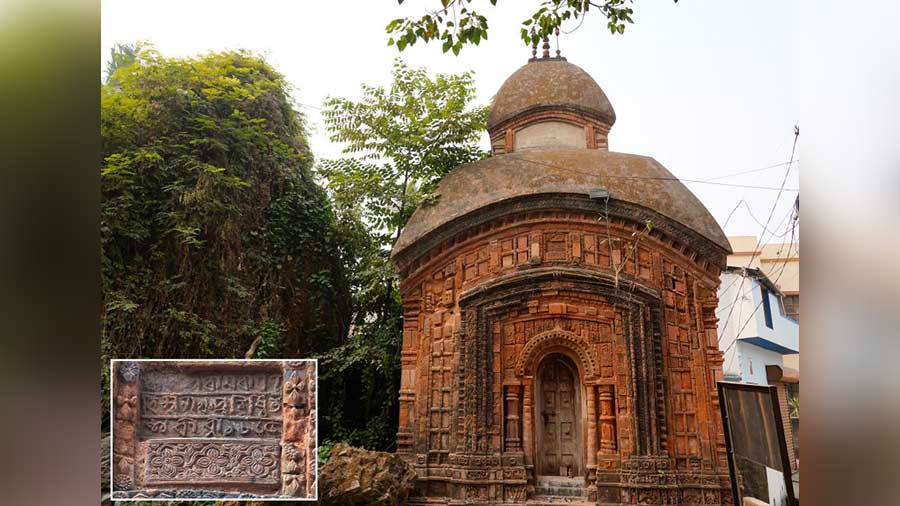
The only ‘aatchala’ temple inside Nandadulal temple at Halisahar, which has been renovated by the West Bengal State Archeology Department
Amitabha GuptaClose to the Municipality building, inside a small lane named Barendra Gali, a small enclosure houses an aatchala temple, known as the Nandakishore temple complex. Despite being protected by the West Bengal State Archaeology Department, three of the temples are in a sorry state, covered with vegetation and even tree roots.

Twin five-pinnacled temple at Halisahar
Amitabha GuptaWhen you enter the temple complex, on your left is the aatchala-styled Nandakishore temple, built in1743. It is one of the most prominent temples, known for its terracotta work, in the whole of North 24 Parganas district. Surprisingly, it is also covered with vegetation and tree roots. Only the temple opposite to it has been cleared of trees. It is a similar looking temple with the same year of construction as the Nandakishore temple. However, it has mainly floral motifs and significantly less terracotta work. The other two temples are totally covered with vegetation.
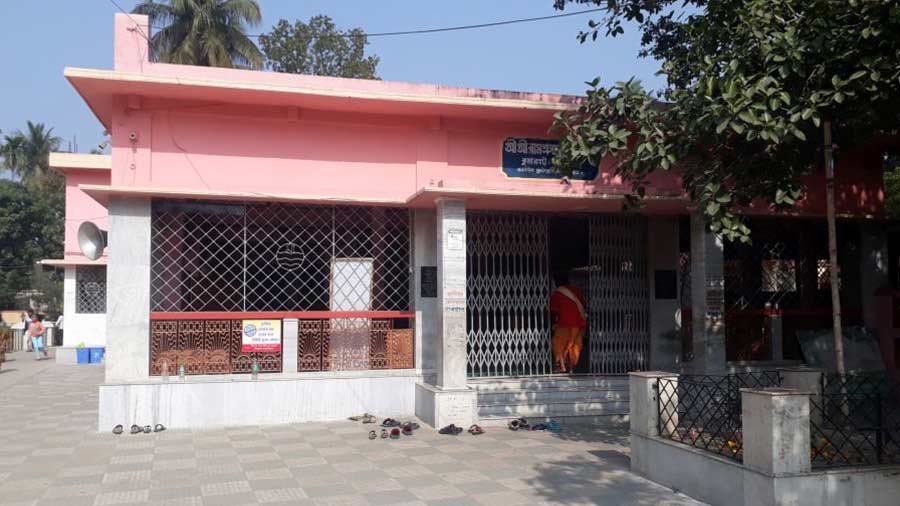
A modern temple has been built at Halisahar adjacent to the place where poet Ramprasad used to meditate
Wikimedia Commons, PinkapaniThe Halisahar Park, besides the Hooghly is pleasant to walk around and easily the most popular spot of the town. A five-minute walk towards south from the park, takes the visitor to the Siddheswari Kali Temple at Balida Ghat park. The flat roofed temple, along with an aatchala Shiva temple and natmandir, is a very peaceful place to sit by the river.

Siddheswari Kali temple complex near Balida Ghat Park at Halisahar
Sujoy DasAbout 500 metres north of Ramprasad Ghat stands the Chaitanya Doba and a temple. Chaitanya Doba is a small pond near which stood the house of Ishvara Puri, who once initiated Sri Chaitanya Mahaprabhu with the divine Hare Krishna mantra. Folklore says when Chaitanya came to meet his guru here, he got emotional and began rolling on the ground which caused the ground to cave in and later formed into a pond. In 1935, a temple was built here.
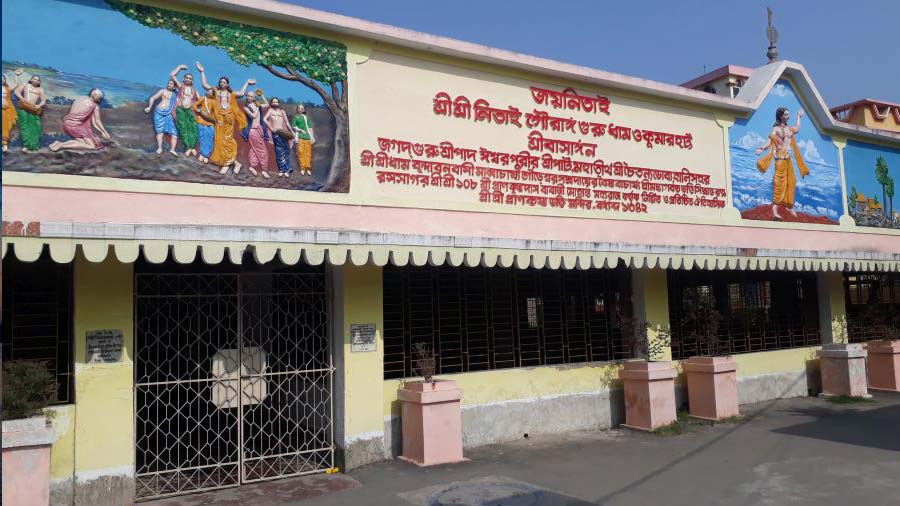
The temple, which has been built near Chaitanya Doba at Halisahar
Wikimedia Commons, PinkapaniIf one’s appetite for built heritage increases after visiting Halisahar, one can always visit the adjoining township of Kanchrapara. If you start early from Halisahar, Kanchrapara can be completed on the same day.


